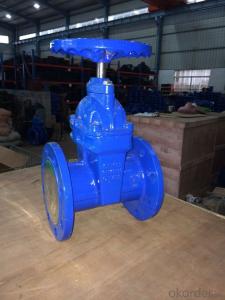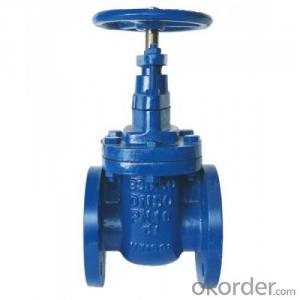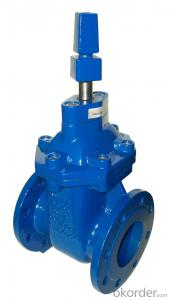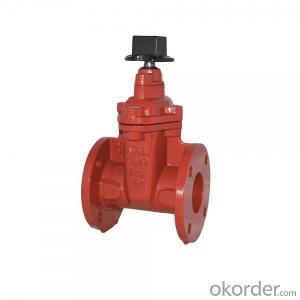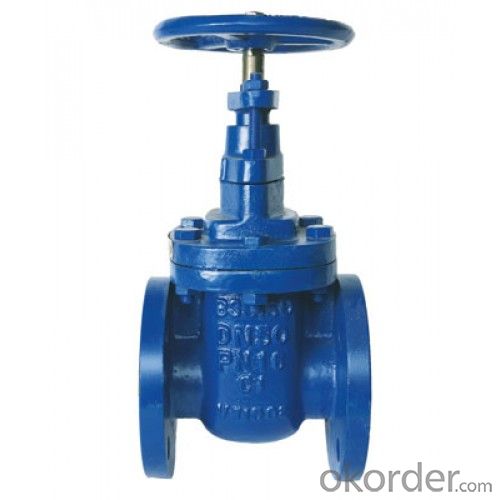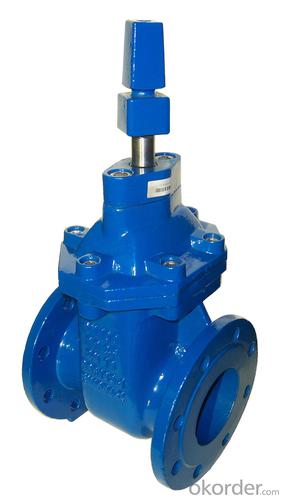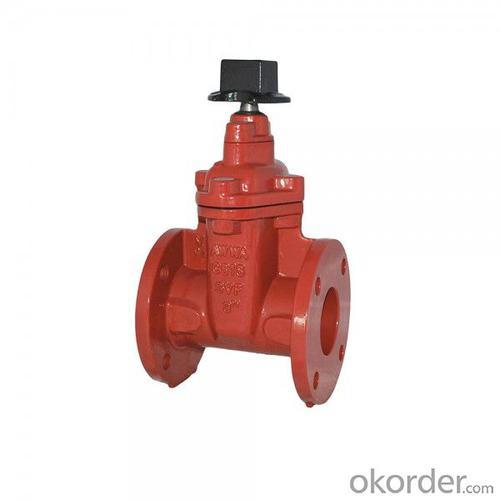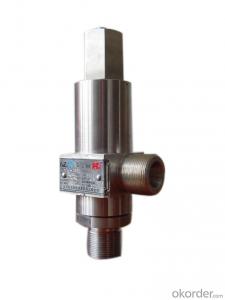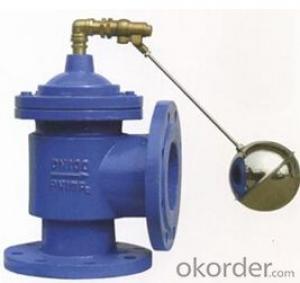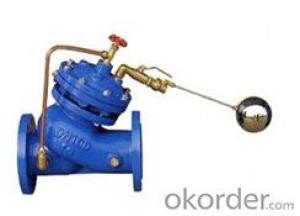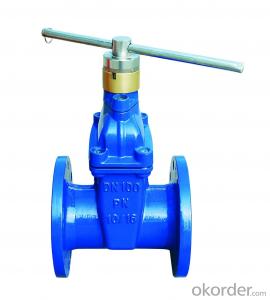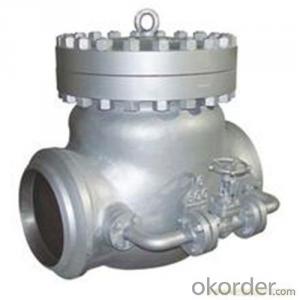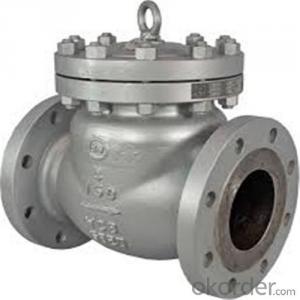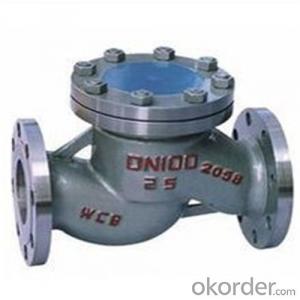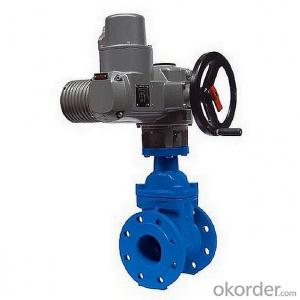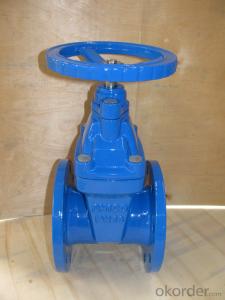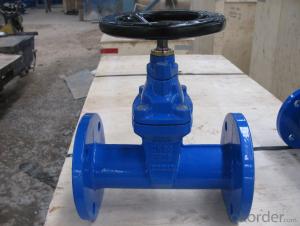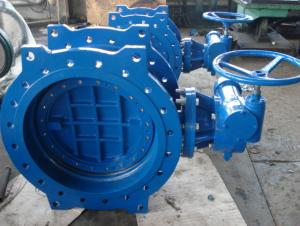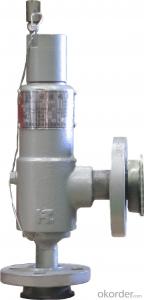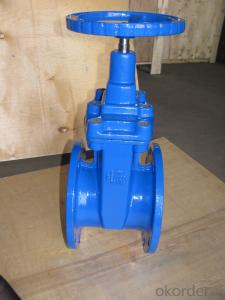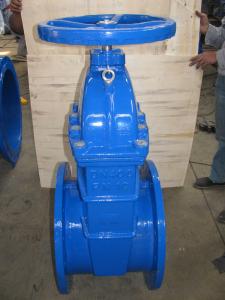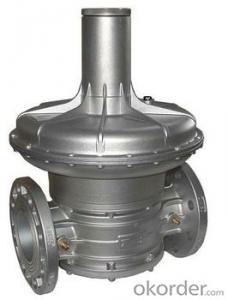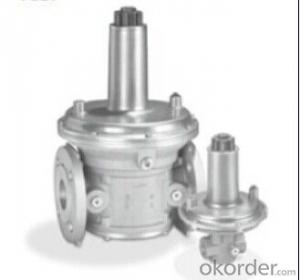Ductile Iron Gate Valve Non-Rising Stem of DIN3352 F5
- Loading Port:
- Tianjin
- Payment Terms:
- TT OR LC
- Min Order Qty:
- 10 unit
- Supply Capability:
- 100000 unit/month
OKorder Service Pledge
OKorder Financial Service
You Might Also Like
Non-rising resilient seated gate valves solve the problem in general gate valves such as leakage, rusting etc. and saves installation space. It is used widely in tap water industry, sewage treatment, shipping construction, petroleum, chemicals, food, pharmacy, textile, electric power, metallurgy and energy system's pipeline to adjust and shut off fluids.
l Replaceable O-ring
l Low torque operation
l Rubber encapsulated wedge
l Clockwise closing direction
l Fusion bonded epoxy coated inside and outside
Specification
Body materials: Ductile Iron
Design standard: DIN3352 F5
Design pressure: PN10/PN16/PN25
Size: DN80mm-DN2000
Connect type: Flanged gate valve
Seal type: Resilient seated gate valve, EPDM+ Ductile Iron
Coating:
Fusion bonded epoxy coated both on the interior as well as the exterior surfaces of the valve, flange surfaces are also fully epoxy coated, blue color.
Application
Potable water, neutral liquids, irrigation, heating and chilled water, fire systems etc, in either above ground or buried service applications and requires minimal maintenance
Feature
This Ductile Iron Resilient Seated Gate Valve is fully compliant to DIN3352 F4. We have light weight type, heavy weight type and even middle weight type for your reference, and these three options design construction of ductile iron will offer a robust and durable extended life performance.
1- Bolted bonnet, full bore: used for larger valves and higher pressure applications.
2- Stem sealed with O-rings: realize zero leakage, could be replace under full pressure.
3- Rubber encapsulated wedge: excellent elastic memory, ensure sealing effect.
4- Blue fusion boned epoxy coated inside and outside: suitable for portable water.
5- Working pressure from -1 to +16 and working temperature from -10 to +80°C
Durable
This valve is suitable for use in a wide range of applications including potable water, neutral liquids, irrigation, heating and chilled water, fire systems etc, in either above ground or buried service applications and requires minimal maintenance. This Resilient Seated Gate Valves have a rated working pressure of 16 Bar. The valves seal 100% leak tight. The waterway is clear, unobstructed and free from pockets. Resilient seated gate valves are fusion bonded epoxy coated both on the interior as well as the exterior surfaces of the valve, flange surfaces are also fully epoxy coated.
Advantage
1- OEM Factory : Professional manufacturer, clients from whole world.
2- High Quality, Competitive Price: Custom is accepted.
3- Complete Service: Long service Life, Fast delivery, Multilingual services.
4- Certificates: ISO9001, CE, NSF, TS, WRAS.
5- Low MOQ: Ready for providing the sample and producing some small orders.
FAQ
Q: Are you manufacturer of trading company? Which kind of valves do you supply?
A: We are a professional manufacturer of butterfly valves, check valve, non-return valves, gate valves, Y-strainer and so on.
Q: Will you do inspection before shipment? Whether Third Party Inspection is available?
A: We have a professional engineer team, so we can offer you the most professional technical support. All valves are tested twice before and after hammer pin to ensure its perfect sealing property and to make sure every valve is ok before ex-factory. TPI is ok but the clients should bear all fees.
Q: What kind of package do you use for these valves?
A: Valves from DN80-DN1400 will be packed in wooden boxes, but valves above DN1400 will be in wooden pallets. If you need wooden boxes for above DN1400, the price may be more expensive.
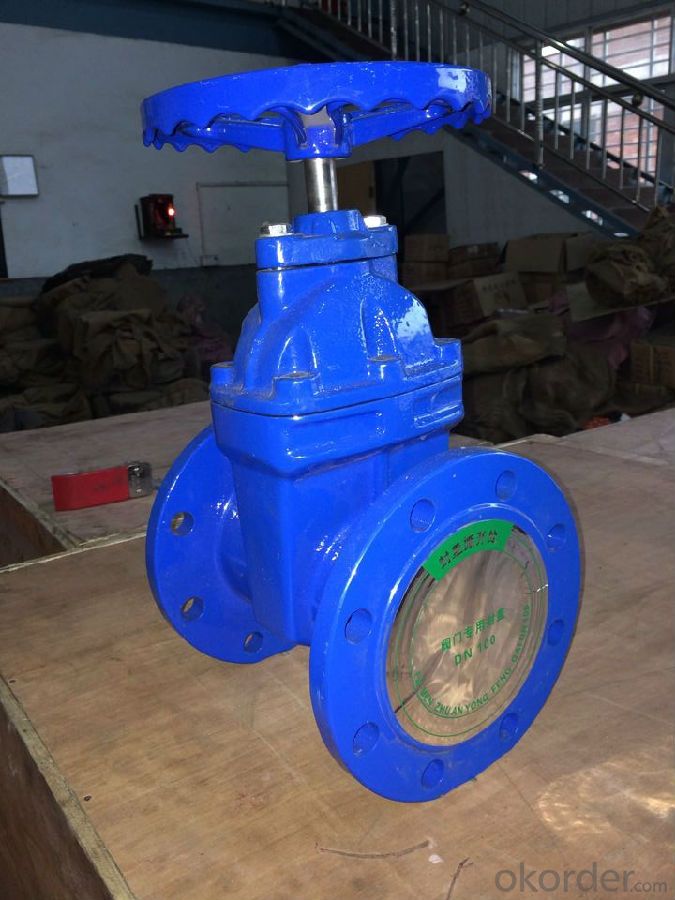

- Q: I accidentally pushed the pressure release valve on my hot water heater last night. It ran for a while, and did not stop. I turned the water off, the valve on the cold water piper above the water heater, and it stopped running. Will this stop running at some point? The overflow tray fills too quickly for me to drain it. When I turn the water back on it starts pouring out again. HELP!!!
- the device once activated rarely reseals It is called a TP valve or temperature and pressure they cost about 15 bucks at the big box stores they usually have a pipe attached to them and are plumbed outside you will need to cut the pipe and unscrew the fitting attache to the TP Now remove and replace the TP make sure to use tape or pipe dope Do not touch the valve in the future reinstall the pipe and solder the pipe back together using a coupler
- Q: Ok I recently changed my pcv valve and today when I was checking my spark plugs I noticed and valve that looked exactly like a pcv valve on the passenger side valve cover iam not sure exactly what this valve is ?? I should note that I changed the pcv valve on the driver side because I noticed that it was just a hose coming out of a rubber grommet and into the back of the carb was that just a breather hose ? Thanks in advance for any info
- That other one is the crankcase breather, it goes to the air cleaner with a small clear plastic filter by the main air filter. It's not a valve so changing the breather filter is all that need be done with it.
- Q: I have 1998 Husqvarna WR250 2-stroke and the torque valve isnt connected and i am wondering if its worth it4 me to track down the part that ismissing to get it working. does the torque valve increase power much? please help cos im wondering whether i should sell bike and get motocross bike instead.
- It's probably referred to as a Torque Valve in the spare parts manual. But yes, the power valve is what gives the WR250 it's buzz. Hook it up!
- Q: overrun clutch solenoid valve dtc definitions code P1760
- Description The overrun clutch solenoid valve is activated by the TCM in response to signals sent from the park/neutral position (PNP) switch, overdrive control switch, vehicle speed and throttle position Will then be controlled. TCM TERMINALS AND REFERENCE VALUE ON BOARD DIAGNOSIS LOGIC Diagnostic trouble code O/R CLTCH SOL/CIRC with CONSULT-II or P1760 without CONSULT-II is detected when TCM detects an improper voltage drop when it tries to operate the solenoid valve. POSSIBLE CAUSE Check the following items. Harness or connectors (The solenoid circuit is open or shorted.) Overrun clutch solenoid valve DIAGNOSTIC TROUBLE CODE (DTC) CONFIRMATION PROCEDURE CAUTION: Always drive vehicle at a safe speed. NOTE: If DIAGNOSTIC TROUBLE CODE CONFIRMATION PROCEDURE has been previously conducted, always turn ignition switch OFF and wait at least 5 seconds before conducting the next test. TESTING CONDITION: Always drive vehicle on a level road to improve accuracy of test. After the repair, perform the following procedure to confirm the malfunction is eliminated. WITH CONSULT-II Turn ignition switch ON and select DATA MONITOR mode for `ENGINE with CONSULT-II. Start engine. Accelerate vehicle to a speed of more than 10 km/h (6 MPH) with D position (O/D ON). Release accelerator pedal completely with D position (O/D OFF). WITH GST Follow the procedure With CONSULT-II. WIRING DIAGRAM - AT - ORVCSV Diagnostic Procedure 1: CHECK VALVE RESISTANCE 2: CHECK VALVE OPERATION 3: CHECK POWER SOURCE CIRCUIT 4: CHECK DTC 5: CHECK TCM INSPECTION This isn't something you want to do in your driveway. Take it to a decent mechanic and they should have it knocked out in about an hour or less, if it's the same one I'm thinking of.
- Q: So I know the main purpose of the EGR valve is to recirculate some exhaust to the cylinders to reduce NOx emissions. However, a mechanic told me that a malfunctioning EGR valve can make the engine run way hotter, and that this can damage the pistons, or other components of the engine, over time. Is that true?
- Yes, very true. It would help if you stated what vehicle it was for. But let's say it's a Ford F-series truck with the 6.0L diesel, highly known for this problem. You can actually purchase an EGR delete which actually bypasses the valve so it won't burn the piston rings (the actual part that burns up). Buying this item only costs a few hundred and will save you thousands in the long run.
- Q: I have a 1987 Chevy Blazer with a 5.7 liter 350 engine. Where is the PCV valve located on it?
- PCV has been in one of the valve covers for Many years.
- Q: The diablo tunner says you can cut off your EGR valve, only if your going to take it off. What effect will this have on the car?
- The EGR valve is basically just an emission control device. On a non-computer controlled vehicle, removing it would increase your gas mileage a little but it wouldn't improve your engine performance that much unless you made other changes such as a better exhaust system. In a computer controlled car, removing the EGR can cause all kinds of problems unless you can trick the computer into thinking the EGR is still there which is NOT easy!!!
- Q: I have a 1991 Toyota Supra turbo that has to have the valve stem seals replaced.It puffs white smoke upon start up,but it goes away.Just curious if the seals can be replaced while the head is still on the motor in the car.
- yes valve stem seals can be replaced with head on, requires cam removal and cil. pressurised with air to hold valves in place whike vakve spring is removed seal changed and spring and keepers reinstalled. If you already had this done and it still smokes chances are you have a bad valve guide.
- Q: As title.What's an easy way to remember: mitral valve leaflets are anterior and posterior leaflets; tricuspid leaflets are anterior, posterior, and septal (medial); aortic valve leaflets are left, right, posterior leaflets; pulmonary valve leaflets are left, right, anterior leaflets?It's easy to remember all but one valve (mitral) have three leaflets each. Physically aortic root sits behind pulmonary trunk, I guess that makes it easy to remember aortic valve has left, right, Posterior; and that pulmonary valve has left, right, anterior leaflets. Where I'm running out of ideas now is how to remember tricuspid has anterior, posterior and septal leaflets... Please help.Thanks.
- The tricuspid valve has three leaflets which are thin and membranous with commissures that appear more like indentations than true commissures. The TV apparatus is similar to the mitral valve but has greater variability and thinner leaflets. The three leaflets are the anterior, septal and posterior leaflets, with the anterior and septal being larger than the posterior leaflet. TV= tricuspid valve tri-cuspid=3(three leaflets) leaflets=3leaflets Tricuspid: Having three flaps or cusps. The valve that is called the tricuspid valve is situated between the right atrium and right ventricle and permits blood to flow only from the atrium into the ventricle. The aortic valve in the heart also has three cusps. Tricuspid valve (Anat.), the valve, consisting of three triangular membranous flaps, at the opening of the right auricle into the right ventricle in the heart of most mammals; -- sometimes called the tricuspid valves, each flap being regarded as a valve. Take care as always
- Q: like my Acura has a 16v 4clyinder engine , and i dont know what valves does , the more vavles the faster?
- Valves are in the Cylinder Head, They let Air and Fuel into the combustion chamber. 4 vavles let more air and fuel in than 2 vavles, Which makes more power.
Send your message to us
Ductile Iron Gate Valve Non-Rising Stem of DIN3352 F5
- Loading Port:
- Tianjin
- Payment Terms:
- TT OR LC
- Min Order Qty:
- 10 unit
- Supply Capability:
- 100000 unit/month
OKorder Service Pledge
OKorder Financial Service
Similar products
Hot products
Hot Searches
Related keywords
